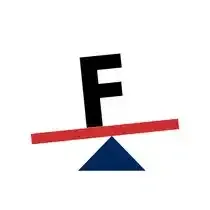As housing costs rise across United States cities, local governments are adopting inclusionary housing policies to ensure that some portion of new residential developments remains affordable. These policies—defined and tracked by organizations like the Lincoln Institute of Land Policy—require or encourage developers to include below-market-rate units in otherwise market-rate projects. Today, over 1,000 towns have implemented some form of inclusionary housing, often in response to mounting pressure to prevent displacement and address racial and economic inequality.
What’s the Difference Between Mandatory and Voluntary Approaches?
Inclusionary housing programs generally fall into two types:
- Mandatory policies require developers to provide a set percentage of affordable units as a condition for building approvals or rezoning. These requirements are typically non-negotiable and apply to developments above a certain size threshold.
- Voluntary programs offer developers incentives—such as increased height limits, density bonuses, or fee waivers—in exchange for providing affordable housing units. Participation is optional and often depends on whether the incentives outweigh the costs.
A 2019 review by the Urban Institute found that mandatory programs tend to deliver more affordable housing units, while voluntary programs offer flexibility and are more politically feasible, especially in places where mandates are limited by state law. Cities like San Francisco, New York, and Austin have implemented both models with varying degrees of success.
Reliable Affordable Housing Production
Mandatory inclusionary zoning policies require that qualifying developments—typically those above a certain size threshold or located within specific rezoning areas—include affordable units, making affordable housing delivery a predictable outcome. In New York City, the Mandatory Inclusionary Housing (MIH) program—launched in 2016—resulted in 2,065 affordable units approved, compared to 8,476 units under the earlier voluntary inclusionary housing program, according to a 2020 Manhattan Institute report.
Mandatory programs also promote economic and racial integration, especially when implemented in high-opportunity neighborhoods. These policies often improve access to affordable housing opportunities for low-income households. Accountability is another strength: developers are bound by deed restrictions and are required to verify income eligibility and submit annual reports.
Arguments in Favor of Voluntary Inclusionary Housing
Voluntary programs allow developers to participate when market conditions are favorable, avoiding the risks of discouraging construction in fragile markets. According to the National Low Income Housing Coalition, these programs offer flexibility while still delivering affordability through incentives.
In Austin, a January 2025 Planning Department memo found that 15 active voluntary density bonus programs have delivered over 46,000 total housing units—including 13,000 affordable units—and raised $41 million in fees. Voluntary tools like Affordability Unlocked and Downtown Density Bonus are particularly important in states like Texas, where mandates are limited by preemption laws: state-level regulations that prevent local governments from passing certain housing requirements such as mandatory affordability rules.
Arguments Against Mandatory Inclusionary Housing
While mandatory policies offer certainty, they may reduce the feasibility of new developments if not well-calibrated. A 2024 Terner Center study warned that overly aggressive affordability targets could reduce both affordable and market-rate housing production. A UCLA analysis estimated that increasing inclusionary zoning (IZ) requirements from 1 percent to 16 percent could result in 4,600–11,900 fewer units per point of increase.
There’s also the risk that developers pass costs to market-rate buyers. According to the Terner Center, higher inclusionary requirements often lead to adjustments in size, design, or pricing, affecting overall housing quality.
Arguments Against Voluntary Inclusionary Housing
The biggest challenge with voluntary policies is inconsistent developer participation. If the market incentives aren’t strong enough, developers may choose not to include affordable units. A 2023 Urban Institute study showed that mandatory programs consistently outperform voluntary ones in delivering affordable housing.
Moreover, voluntary programs rarely meet equity goals; purely incentive-based models usually yield far fewer units. In New York City, Local Progress noted that fewer than 2,000 units were produced under the city’s voluntary policy over 30 years—far below the output after transitioning to a mandatory model.

Source: Wang and Balachandran (2021)
Recent and Future Developments
In San Francisco, developers of projects with ten or more units must dedicate 15 percent to Below-market-rate housing or pay an in-lieu fee. Optional programs like HOME-SF offer bonuses for up to 30 percent affordability.
In Austin, the new DB90 pilot program offers height bonuses for projects reserving 12 percent of units for affordable housing. A 2025 Planning Department memo recommends standardizing affordability requirements, improving transparency, and updating the tiered structure of current programs. Austin also operates the SMART Housing Program, which provides fee waivers for development permits in exchange for building onsite income-restricted units.
Conclusion
Mandatory inclusionary housing policies offer predictable affordability outcomes and promote integration, but they may suppress development without balancing incentives. Voluntary approaches encourage flexibility but often fall short of meeting equity and supply goals. Cities like Portland are experimenting with hybrid models that tailor requirements to local conditions, while federal agencies like HUD explore how to better align national programs with local affordability strategies.
Mandatory vs. Voluntary Inclusionary Housing: What Cities Are Doing to Create Affordable Homes was first published by ACE and republished with permission.
Suthida Boonlek is a dedicated researcher with a strong background in language and intercultural communication.



















